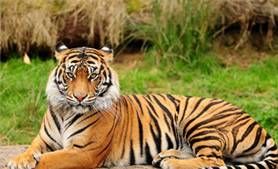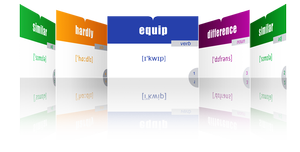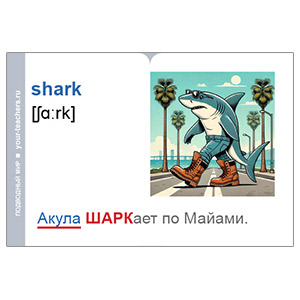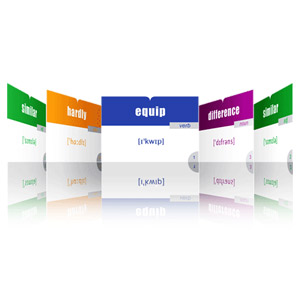Описане тигра на английском языке
- Подробности
- 65980
На этой странице представлено краткое описание тигра на английском языке. Двойной клик по слову откроет его перевод и озвучку. Ключевые слова можно закрепить в тренажёре в конце страницы. Работа со словами задействует моторную память и помогает лучше из запоминать. К каждому разделу добавлен аудиофайл в формате MP3 для более глубокого разбора и развития навыков аудирования.
ТИГР

Vocabulary:
| № | Английский | Транскрипция | Русский |
|---|---|---|---|
| 1 | strong | [strɒŋ] | сильный |
| 2 | whiskered | [ˈwɪskəd] | усатый |
| 3 | striped | [straɪpt] | полосатый |
| 4 | bloodthirsty | [ˈblʌdˌθɜːsti] | кровожадный |
| 5 | predatory | [ˈpredətəri] | хи́щный |
| 6 | proud | [praʊd] | гордый |
| 7 | dangerous | [ˈdeɪndʒərəs] | опасный |
| 8 | formidable | [ˈfɔːmɪdəbl] | грозный |
ПОТРЕНИРУЙТЕ СЛОВА
Краткое описание тигра
Look at the picture. You can see a tiger lying on the ground. The tiger has round pricked ears. Its head is round. Its whole body is covered with striped patterns. It has a big mane. It has 5 fingers on its front paws with retractable claws. It has 4 claws on its hind paws. It has big and long fangs. The tail always ends with a black tip. It looks graceful and peaceful. But it’s better not to mess with tigers. They are dangerous. They are predators, which means they eat other animals.
LISTEN TO THE TEXT
15 Интересных фактов о тигре
The tiger is a species of predatory mammals of the family Felidae. It belongs to the genus Panthera. Its body is richly striped with reddish-orange fur patterns. The skull is similar to a lion though the frontal region is usually less depressed or flattened. Well-developed fangs can reach 8 cm in length. The tail often has rings and ends with a black tip. The largest are Bengal and Amur subspecies. Adult males can reach 2.3–2.5 m in length and sometimes up to 2.9 m. They can weigh up to 275 kg and in some cases 320 kg. Tigers have well-developed night vision. In the wild they mainly feed on ungulates and can eat 30–40 kg of meat at one time. During a hunt they can reach speeds up to 60 km/hr. They can jump to a height of 5 m and to 9–10 m in length. Dragged prey can be 6–7 times their own weight. They are not born with an innate hunting skill; mothers teach their cubs. Tigers are strong swimmers and bathe in ponds, lakes and rivers to keep cool. Amur tigers and brown bears can be a serious threat to each other. Lions can breed with tigers to create hybrids called liger and tigon. Ligers grow far larger than either parent species. Tigers live around 15–18 years in the wild and up to 25 years in captivity.
LISTEN TO THE TEXT








 Как правильно изучать английский язык по карточкам (статьи)
Как правильно изучать английский язык по карточкам (статьи)